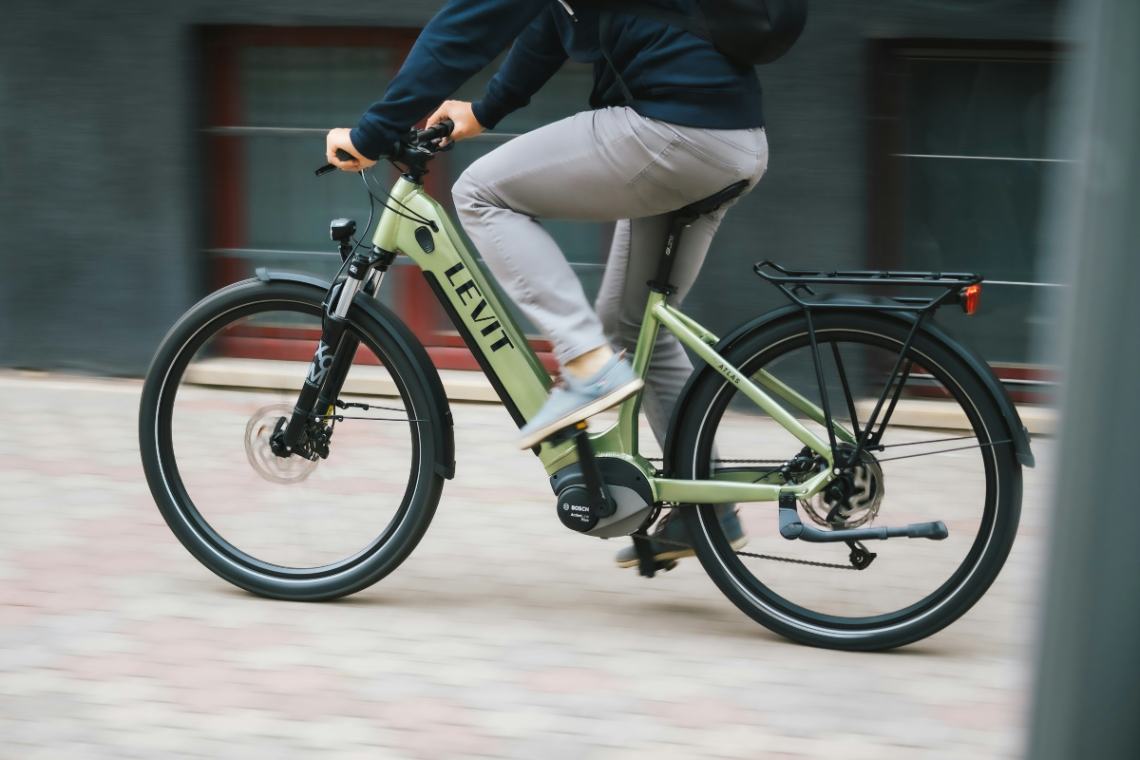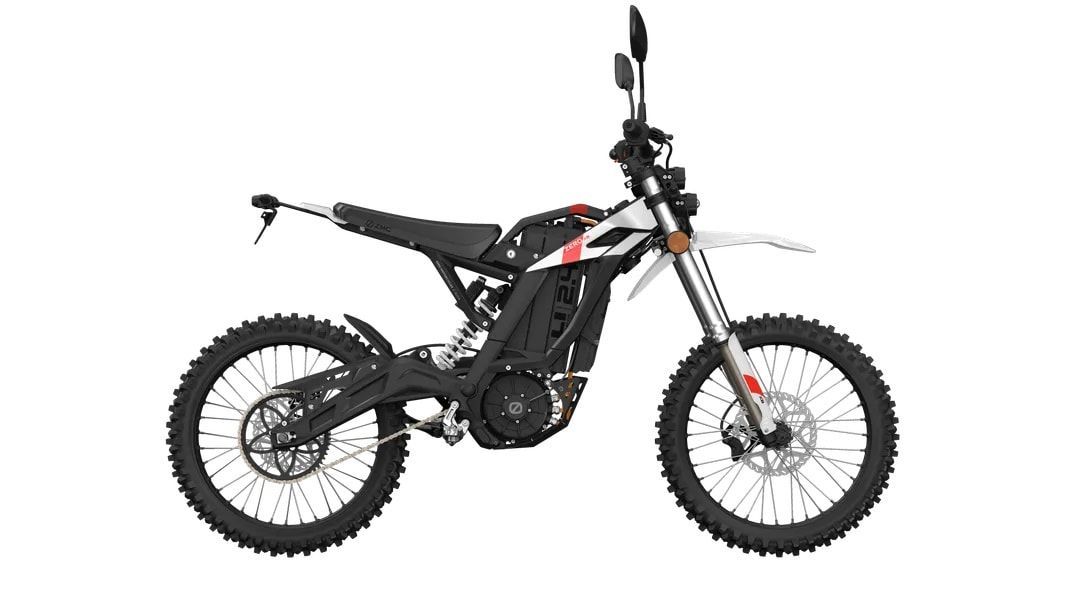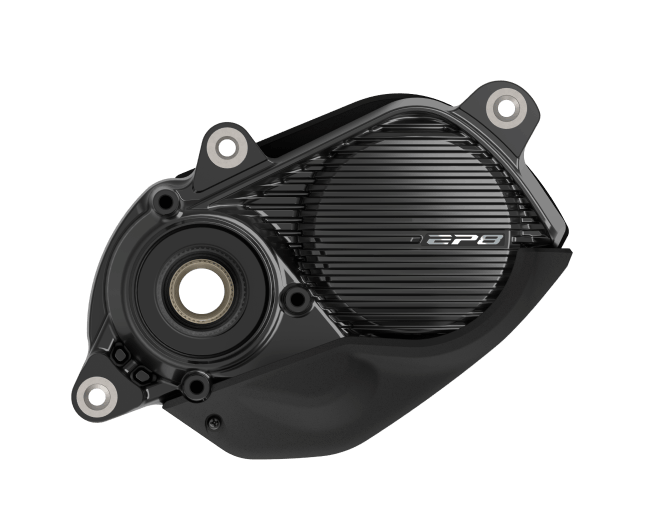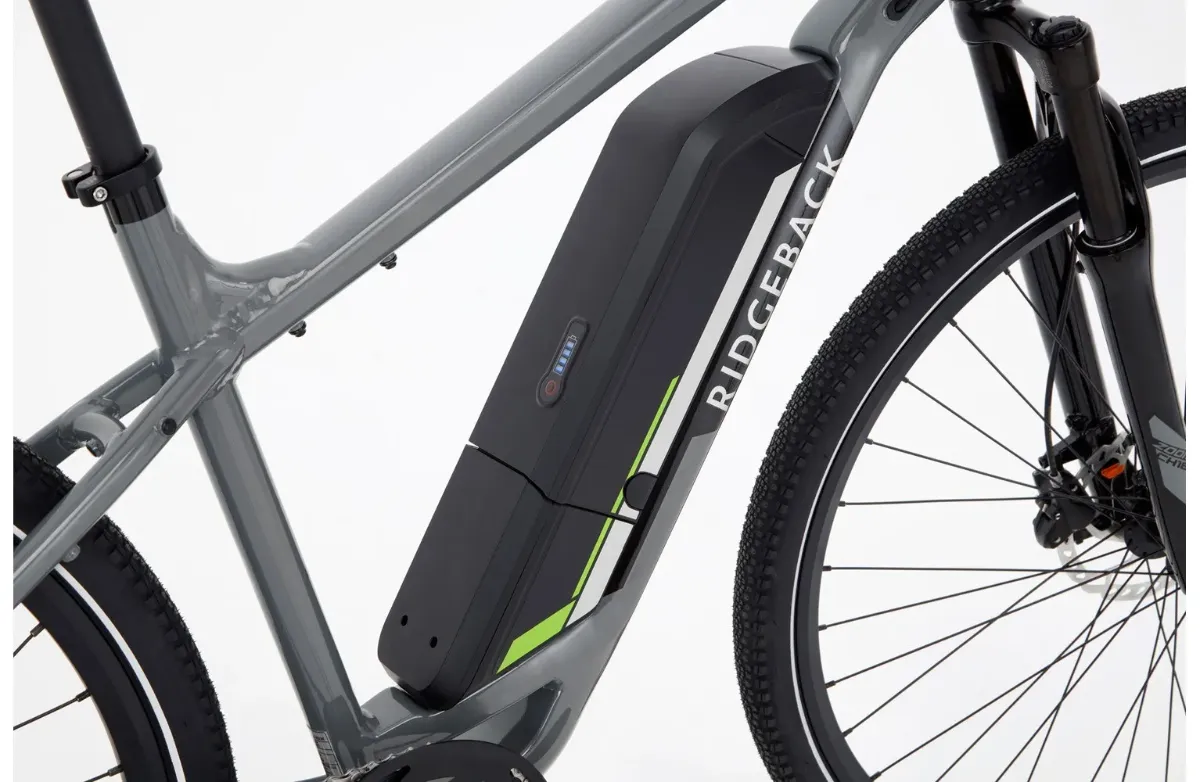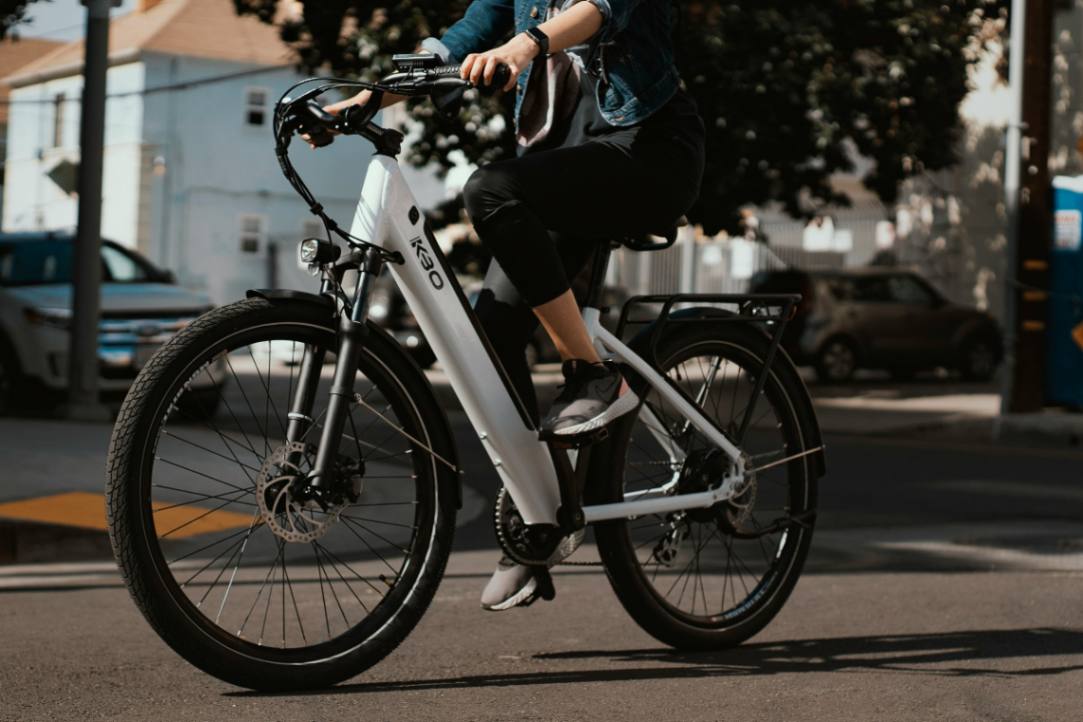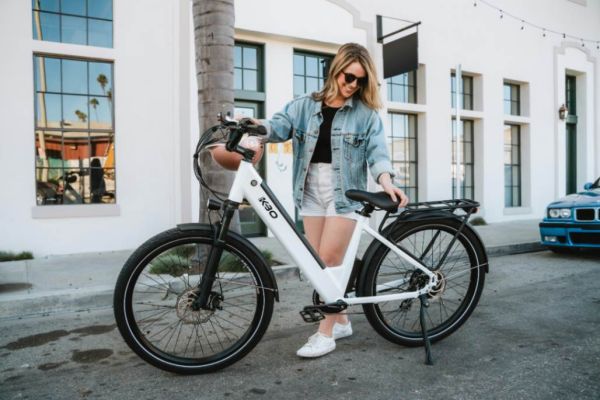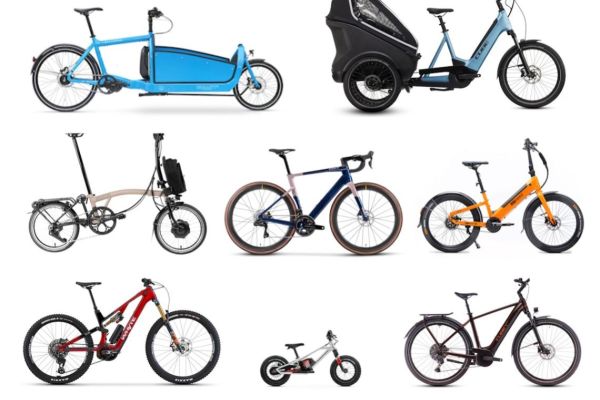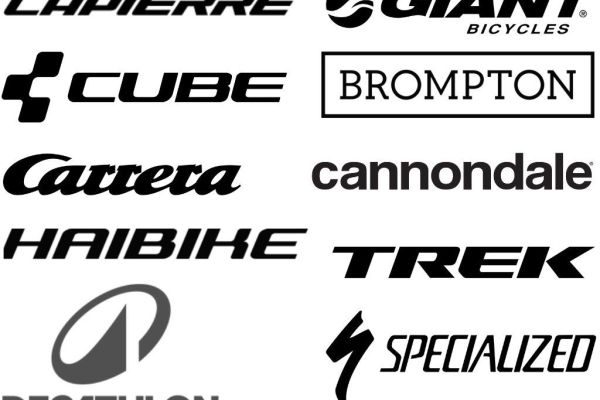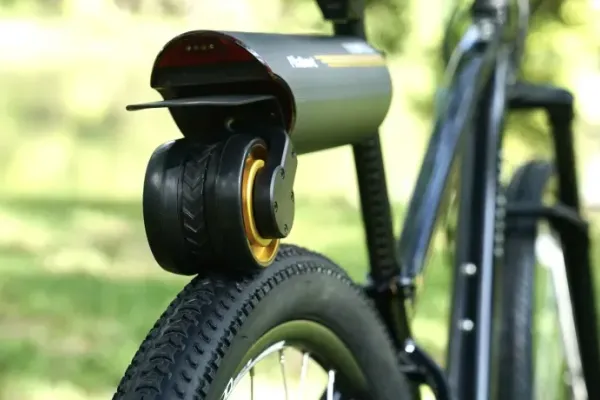The essential beginners' guide to e-bikes
E-bikes are increasingly popular for transport and recreation, combining the simplicity of a pedal bike with the power of an electric motor. If you're just starting on your e-bike journey, there's quite a lot to learn - here are the key fundamentals.
Key takeaways
-
An electric bike, or e-bike, is a bicycle with an electric motor that assists with pedalling.
-
Most of the components of an e-bike are the same as a conventional pedal bike.
-
The motor works as a force multiplier, doubling (or more) your own effort.
How do electric bikes work?
Fundamentally an electric bike is a bicycle, with normal bicycle components like wheels, tyres, gears and brakes. But somewhere in amongst all the conventional parts there'll be an electric motor and a battery. Depending on the bike, the motor could be integrated into the frame between the pedals, driving the normal bike chain, or it could be in one of the wheels. Find out more in our guide to motors. The battery could be on a rack, mounted on the frame or (on higher-end models) concealed inside the frame. Learn more in our guide to batteries.
There'll be some kind of sensor to detect how quickly (or sometimes how hard) you're pedalling. This information is used by the control circuitry to govern how much power the motor adds. The idea is that the motor supplements your own pedalling efforts - the more you pedal, the more help you get.
You'll find some kind of display and controls, either on the frame or on the handlebars. This will show key information like remaining battery charge and speed. You can usually choose from a range of settings to adjust the amount of assistance the motor gives you, from "just makes hills a bit easier" through to "climbing the steepest hills with almost no effort". If you'd like to work through a step-by-step basics course on this, check out our short course Learn: How e-bikes work.
What's the difference between an e-bike and an electric motorbike?
Even though e-bikes have motors, they're still primarily pedal-powered. An e-bike won't go anywhere unless you're pedalling (although you don't have to pedal very vigorously if you don't want to - e-bikes can be set up to do nearly all the work, you just need to gently turn the pedals to keep the motor active). An electric motorbike doesn't have pedals, so all the power comes from the motor.
If that was all there was to it, things would be very simple. However, local laws and regulations are also at play. In the UK, Europe and other territories, there's a maximum power output and a speed limit at which the motor has to cut out. Go beyond those parameters and you've got a motorbike, even if it has pedals. Find out more in our guide to UK e-bike law.
Benefits of electric bikes
Bicycles are already brilliant machines. They're simple, reliable and incredibly efficient - in energy terms, pedalling a bike is more efficient than walking. A pedal bike is a great way to transport one person over short to medium distances.
There are limitations to a purely human-powered bike, though. If the distance is too great, the hills too steep or the load too heavy (or any combination of those) then pedalling a bike can become hard work even for a fit and energetic rider. And lots of people are, for a variety of reasons, not able to pedal bikes easily or strongly.
This is where the e-bike comes in. By supplementing the rider's efforts with a motor, the capabilities of the bike are massively extended. The distance over which a cycle commute is plausible gets longer. Hills are less offputting. You can carry more stuff, so getting a week's shopping home or taking two children to school becomes a realistic prospect.
Even though there's a motor to help you, you can still (if you wish) get the benefits of exercise from an e-bike. The amount of assistance is adjustable, so you get to choose how much effort you put it as you're going along. If you just want to get where you're going without breaking a sweat, use more motor assistance. If you're heading out at the weekend for some exercise, use less.
And because e-bikes are fundamentally still bicycles, they're still fairly simple. Essentially, electric bikes are bikes, but more so.
Types of electric bike
There are many different varieties of bicycle, and all of them are available in power-assisted versions. It can be difficult to work out exactly what you need - our definitive guide to types of electric bike will give you the full low-down, but here's a brief rundown:
-
Electric trekking bikes are versatile all-rounders, equally at home commuting, running errands or touring. They have a comfortable but efficient riding position and usually a full complement of key accessories like lights, mudguards and racks.
-
Electric town bikes are designed for shorter distances with ease of riding on busy streets as a priority. You can expect a more upright riding position for a good view of the road ahead. There's a range of styles in this category, from traditional to futuristic.
-
Electric road bikes take the classic racing bike and give it an extra boost. Designed for long distances at a high pace, they're usually an enthusiast's choice but with the addition of mudguards and a rack some can make effective commuting bikes too.
-
Electric folding bikes can be folded and unfolded in seconds, making them easy to stash away in small spaces. They're a great option for mixed journeys that combine a train ride with a bike ride.
-
Electric cargo bikes are ideal for carrying heavy loads. Many have optional child seats and can often be a viable alternative to a car.
Electric bike components
Electric motor
The key component of an e-bike is the motor. Electric motors were invented nearly 200 years ago and modern ones are light, compact, powerful and efficient. The concept is fairly simple - connect a supply of electricity and the motor spins. Connect the motor's output shaft to a bike wheel and the wheel spins, which propels the bike along.
There are two main categories of e-bike motor. In terms of efficiency, crank (or mid drive) motors are the best. These motors are built in to the bike frame between the pedals and drive the bike wheel using a normal bike chain. Mid drive motors are typically more responsive to the rider's pedal inputs and driving through the normal bike gears makes them great for climbing. The main downside is that the frame needs to be specially made for the motor, so it's a more expensive option. The majority of mid- to high-end e-bikes use this arrangement.
The alternative is a wheel or hub motor, with an electric motor at the hub of either the front or rear wheel which drives the wheel directly. This is generally a lighter-weight option and opens up the possibility of retrofitting a motor to an existing bike. You do lose the benefit of the gears, though, and front-wheel motors especially can struggle on steep hills.
Find out more in our guide to electric bike motors.
To comply with UK e-bike regulations, the motor must be limited to a continuous power output of 250W. For context, an untrained adult can muster about 50-100W while an elite cyclist can produce over 400W for an hour. So 250 is a substantial boost.
Battery basics
To supply power to the motor you need a battery. Batteries are even older than electric motors, having been invented in 1800. A battery uses a chemical reaction to store electricity. In rechargeable batteries, the chemical reaction is reversible, so you can put electricity "back into" the battery. Many different combinations of chemicals have been used over the years, and most e-bike batteries have settled on some kind of lithium-based battery. These store a lot of power for their size and weight and have excellent battery life - they can be recharged hundreds of times before the capacity starts to diminish.
One of the choices you'll need to make is battery capacity. The bigger the battery, the more energy it can store and the further you can go. The trade-off is extra weight - if your rides only ever use a quarter of your battery capacity then you're carrying a lot more battery than you need. Unlike petrol tanks, batteries don't get lighter as you use them up...
Battery capacity is typically measured in watt-hours, or Wh. 1Wh means that the battery can deliver 1W of power for 1 hour. E-bike batteries generally range from 200-500Wh (smaller and bigger ones are also found), which would run an e-bike motor for 1-2 hours. In practice you'll not be using full motor power all the time.
In range terms, you won't find many e-bikes with an assisted range of less than 30km (about 20 miles) and some will do 100km (60 miles) or more. Some bikes are available with additional range extender batteries and some electric cargo bikes (that need to deal with heavy loads) have two full-sized batteries.
Read more in our guide to electric bike batteries.
Riding and safety
How to ride an electric bike
If you can ride a bike, you can ride an electric bike. If you have balance or other issues that prevent you from riding a bike, look at electric tricycles instead - with three wheels they stay upright by themselves.
Really the only thing you need to do differently on an e-bike compared to a pedal bike is to turn the motor on. Pedal off and the motor will cut in to help. You can change the amount of pedal assist by pressing buttons on the controller, either on the bars or on the frame.
You do need to be aware that an e-bike is heavier than a conventional bike and is likely to have a higher average speed, so take care and be aware of your surroundings. This is particularly important on shared-use paths with pedestrians around.
If you haven't ridden a bike for a while (or have never ridden one) then cycle training courses are available.
Electric bike maintenance
As e-bikes are essentially bicycles, maintenance is largely the same. The basics are simple - check the tyre pressures and top up if necessary, clean and lubricate the chain from time to time. Servicing isn't super-complicated either, with tasks like changing brake pads or adjusting gears needing only basic tools and a little knowledge. Most things can be done at home but if you don't have the time or inclination then any bike shop can work on things like brakes, gears and suspension.
The motor and battery are where the differences lie. Generally motor units don't require specific servicing or regular maintenance, so unless something goes wrong they can be left alone. There are motor repair specialists and most bike shops have upskilled to work on them too.
Pay particular attention to battery charging. There's a lot of energy in an e-bike battery, overcharging or a faulty battery can lead to fires. Always use the bike manufacturers' supplied charger, charge the battery away from anything flammable and check it regularly for damage or swelling.
Learn more in our guide to electric bike maintenance.
Frequently Asked Questions
How much does an electric bike cost?
There is a huge range of prices. Remember that an e-bike is a regular bicycle plus a motor and battery, so they're always going to be more expensive than comparable pedal bikes. You can find e-bikes from a few hundred pounds, but approach with caution - it's difficult to specify solid, reliable parts for that kind of retail price. We'd suggest around £1,000 as a sensible minimum (although look out for offers and reductions, especially in early spring when shops are making space for new model year bikes). At the other end, the sky's the limit - a top of the range electric mountain bike can be well into five figures.
How fast are they?
While there's no technical reason why an e-bike couldn't be very fast indeed, speeds are typically limited by local regulations. In the UK and Europe, the maximum speed with electric assist is 25km/h (15.5mph) - you can ride faster than that but you're on your own, the motor has to stop helping. It's very easy to get hold of "e-bikes" that'll do upwards of 40mph without any pedalling at all, but they're not legal for road use. The motor's power output is also limited to 250W continuous power.
How far can I go?
The range of an e-bike depends on many factors - weight (of bike and rider), rolling resistance of tyres, ground surface, number and steepness of hills, how windy it is, level of assistance used - so it's a tricky thing to measure. You should expect at least 30km (about 20 miles) of assistance, though. An electric road bike using a low level of assistance could easily get 80-100km (50-60 miles) with charge to spare.
How long does it take to charge the battery?
Generally between three and six hours depending on the capacity of the battery, although you can get to 80% charged in a lot less than 80% of the time.
Do I need vehicle tax, insurance, MOT, registration...?
In the UK, e-bikes that comply with the Electrically Assisted Pedal Cycle regulations (aka "electric bike laws") are classed as bicycles, so you don't need any of those things. That said, insurance is a good idea, although many household insurance policies will cover bicycles.
Summary
E-bikes are best understood as pedal bikes with motor assistance. Riding an e-bike requires you to pedal, but whatever effort you put in is supplemented by power from the electric motor, running from a rechargeable battery. The amount of assistance is adjustable, so you can decide if you want to go further/faster for the same effort or use less effort to go the same speed or distance.
There are many different styles of e-bike available to fit different needs. The speed and power of e-bikes is limited by local regulations. E-bikes extend the potential and capabilities of regular pedal bikes.
Related content
Read more great content from ebike.help and become an electric bike expert today.

